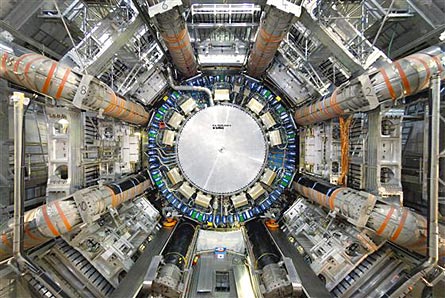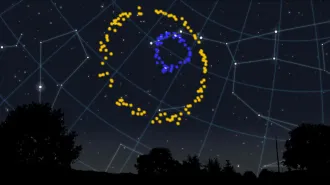- More than 2 years ago
When the world’s most powerful atom smasher attempts a second inaugural switch-on this November, it will be pulling its punches. The Large Hadron Collider, housed underground at CERN on the border between Switzerland and France, will begin its long-awaited first run at half of full energy, and will not reach its full potential until after 2010, CERN has announced.

The decision, coming after a string of problems with the collider, was a compromise between the need to prevent further damage to the LHC and the need for energies high enough to produce the rare and heavy particles physicists hope to study, says CERN press officer James Gillies.
“We’re still doing the same physics plan we’d envisioned all along,” says Tom LeCompte, physics coordinator for CERN’s ATLAS experiment, which will study collisions of protons. “But it’s happening at a slower pace.”
The LHC’s problems started with an explosion in September 2008 from a faulty electrical connection; several of the superconducting magnets, which steer the beams of protons through a circular 27-kilometer tunnel, were damaged (SN Online: 9/23/08). Since then, scientists have discovered problems with the copper sheathing designed to carry away excess heat from the system. Some of the magnets also appear to have mysteriously lost their ability to steer protons beyond a certain energy level. CERN has opted to repair these flaws during a shutdown scheduled for the end of 2010.
Until then, beams will remain below the design energy of 7 trillion electron volts, starting at 3.5 TeV and getting as high as 5 TeV during the initial run.
Although it is not clear whether the LHC will ever reach its intended energies, LeCompte says the more important question is whether its energies will be high enough to see the Higgs particle, “and I think there’s no question of that.” The Higgs is an as yet unseen particle believed by theorists to be responsible for giving other subatomic particles mass.
LeCompte emphasizes that even at half energy, the accelerator will still be 3.5 times more powerful than the current record holder in high-energy particle colliders, the Tevatron at Fermilab outside Chicago.
“We’re itching to get some beam right now,” LeCompte says. “Whatever they can provide is OK with us.”







